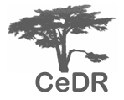


Bioethical discussions on paediatric cochlear implantation: Obscuring the view by constructing an antinomy where 'nature' is set up against 'convention'?
Patrick Kermit, Norwegian University of Science and Technology (NTNU), Faculty of Social Sciences and Technology Management, Department of Social Work and Health Science
Abstract
Most bioethicists engaged in discussions about paediatric cochlear implantations support surgery. Their main argument is that deafness is a disability involving loss of expected function, and thus trying to improve or restore this lost function is considered ethically uncontroversial. They additionally argue that claims made by signing Deaf people that Deafness is not a disability is false and even irrational. Refraining from implantation is thus ethically questionable. This presentation examines three premises underlying this line of thinking. The first is the assumption that there exists an antinomy of two mutually excluding conceptions between two ways of being d/Deaf. The second premise to be unravelled is that the antinomy between deafness and Deafness is an 'impairment specific' version of another alleged antinomy: that between medical and socials model of disability. The third premise alleges that the 'brute facts' of nature should be considered more 'true' than changeable social conventions.
By analysing and questioning the above three premises, I challenge the conclusion that cochlear implantation should always be considered an ethically defendable procedure. Tracking the origins of the distinction between deafness and Deafness, I argue that this distinction was never intended as an antinomy by the people who started to use it. The distinction merely reflected the need for new terminology able to distinguish between an audiological condition and a linguistic community. The merging of d/Deafness concepts with those of medical versus social models of disability has never been a scientific, systematic undertaking. Deaf activists and the scholars supporting them have however played their part contributing to such merging for example using terms such as 'medical construction of deafness' combined with arguments that cochlear implants were a form of genocide.
The attempt to reconstruct these different notions of d/Deafness suggests another approach. Instead of constructing two mutually excluding conceptions, at least three intertwined notions of d/Deafness can be suggested: deafness as physical impairment, deafness as socially constructed disability, and Deafness as membership in a linguistic minority community. An understanding of d/Deafness as a complex interaction between these different notions refutes any crude attempt to decide once and for all what is the 'most true', 'facts of nature' or 'convention'. Instead, the liberating potential of unmasking something thought to be 'nature' as really being 'convention' can probably still produce new insights in the discussion on paediatric cochlear implantations.